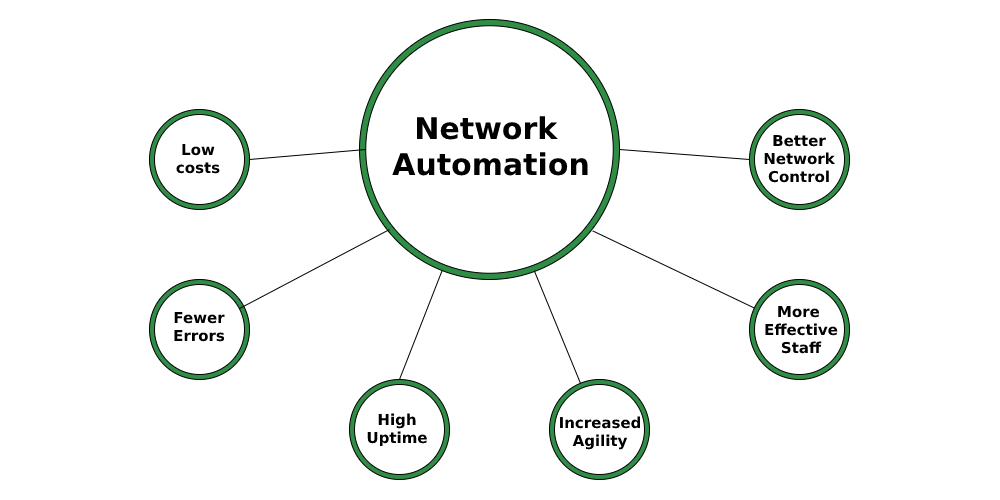
Why Most People Waste Their AI Prompts ? How to Fix It...
In the current landscape of AI technology, many users struggle with crafting effective prompts. This article explores common pitfalls and offers actionable strategies to unlock the true potential of AI tools like GPT-5.
Dev Orbit
July 27, 2025
Introduction
As artificial intelligence continues to evolve, one of the most significant challenges users face is how to create effective prompts that yield meaningful results. Many individuals dive into the world of AI with high hopes but quickly find themselves frustrated by the outputs generated by models such as GPT-5. The reality is that a poorly structured prompt can lead to wasted time and resources. This blog post promises to guide you through an understanding of why most users struggle with their AI prompts and how you can improve your approach to harness the full power of AI effectively.
Understanding the Nature of AI Prompts
To address the issue of wasted AI prompts, it’s essential to understand what a prompt is and how it interacts with models like GPT-5. A prompt is essentially a set of instructions or a question that you provide to the AI model. The quality of these prompts significantly influences the quality of the responses you receive.
Here are some critical aspects concerning AI prompts:
Clarity: Ambiguous prompts lead to ambiguous responses. Being clear and concise increases the likelihood of receiving accurate and relevant results.
Specificity: The more specific you are in your prompt, the better the model can tailor its response. General queries often yield generic answers.
Context: Providing background information or context enables the AI to understand the nuances required for a better response.
For instance, instead of asking, “Tell me about web development,” a more specific prompt would be, “What are the key differences between front-end and back-end web development?” This kind of specificity directs the AI toward providing detailed and focused information.
The Impact of Poorly Structured Prompts
Many users do not realize that a poorly structured prompt can lead to a cascade of issues. The consequences of wasting AI prompts can be significant:
Time Wasted: When users repeatedly submit unclear or broad prompts, they spend considerable time sifting through unhelpful or irrelevant information.
Missed Opportunities: Inefficient prompts may lead to missed opportunities for generating innovative ideas or solutions. An effective prompt can yield compelling insights, while a vague one often falls flat.
Frustration and Burnout: Users may quickly become frustrated with the AI’s lack of useful output and abandon their projects, leading to burnout.
For example, consider a software engineer trying to optimize a part of their code. If they input, “Optimize my Python code,” they might receive vague suggestions. In contrast, a more structured prompt like, “How can I improve the efficiency of this sorting function in Python?” can yield targeted and actionable feedback.
Common Mistakes in Crafting AI Prompts
Many mistakes could lead to wasted potential when crafting AI prompts. Here are some of the most common missteps:
Overloading the Prompt: While including comprehensive details is beneficial, bombarding the AI with too much information can confuse it. Keeping prompts precise while offering essential context is crucial.
Neglecting the Audience: It’s easy to forget who your target audience is when formulating prompts. For example, a business prompt aimed at a technical team should differ from one directed at non-technical stakeholders.
Avoiding Iteration: Users often provide a single prompt and wait for a perfect response, neglecting the iterative nature of the AI. Experimenting with variations of prompts can lead to significantly better outputs.
For instance, a marketing professional seeking to create ad copy may initially pose the question, “Write an advertisement for my product.” Instead, they should consider refining their queries by asking, “What are three catchy headlines for my eco-friendly cleaning product targeting young families?” This clarity leads to improved output.
Strategies for Crafting Effective AI Prompts
To ensure that you utilize your AI prompts effectively, consider implementing the following strategies:
Start with a Clear Objective: Before formulating a prompt, define the goal you want to achieve. Whether it’s generating ideas or solving a problem, clarity of objective is crucial.
Utilize Examples: Providing examples can guide AI toward your desired outcome. For instance, if you’re looking for a specific tone in writing, share a sample paragraph.
Break Down Complex Queries: If your question has multiple parts, consider breaking it down into smaller, manageable queries. This makes it easier for the AI to process and respond accurately.
For example, if you need help with creating a full marketing strategy, start with simpler prompts: “What are the key components of a marketing strategy?” Follow up with specific questions like “How do I identify my target audience?”
Bonus/Advanced Tips for AI Prompt Mastery
Once you grasp the basic strategies, consider these advanced tips to refine your prompt crafting:
Leverage Variables: If you frequently generate similar outputs, consider using variables to maintain efficiency. This can keep your prompts dynamic while ensuring you hit the mark consistently.
Assess the AI’s Feedback: After receiving output, evaluate the AI’s responses critically. This reflection will allow you to adjust your prompts accordingly and drive better results in the future.
Collaborative Prompting: Engage with fellow users or professionals in your field to exchange prompt ideas. Collaboration can lead to discovering unique angles or perspectives you might not have considered.
For instance, if you are a developer seeking code enhancements using prompts, share your best performing prompts in forums or communities to understand how others have refined their approaches.
Conclusion
In conclusion, most individuals struggle with AI prompts due to lack of understanding, poor structuring, and common pitfalls. By recognizing these challenges and implementing effective strategies, you can transform your interactions with AI tools like GPT-5 into productive experiences. Remember to start with clear objectives, provide context, and refine your prompts iteratively. Now is the time to take these insights into action; share your experiences, and elevate your capacity to generate relevant AI outputs.

Enjoyed this article?
Subscribe to our newsletter and never miss out on new articles and updates.
More from Dev Orbit

🕵️♂️ Mastering Stealth Web Scraping in 2025: Proxies, Evasion and Real-World Techniques
A 2025 Guide to Evading Bot Detection with Playwright, Proxies and Human-Like Behavior

How to Write an Essay Using PerfectEssayWriter.ai
Have you ever stared at a blank page, overwhelmed by the thought of writing an essay? You're not alone. Many students and professionals feel the anxiety that accompanies essay writing. However, with the advancements in AI technology, tools like PerfectEssayWriter.ai can transform your writing experience. This article delves into how you can leverage this tool to produce high-quality essays efficiently, streamline your writing process, and boost your confidence. Whether you're a student, a professional, or simply someone looking to improve your writing skills, this guide has you covered.

Top 7 Python Certifications for 2026 to Boost Your Career
Python continues to dominate as the most versatile programming language across AI, data science, web development and automation. If you’re aiming for a career upgrade, a pay raise or even your very first developer role, the right Python certification can be a game-changer. In this guide, we’ll explore the top 7 Python certifications for 2026 from platforms like Coursera, Udemy and LinkedIn Learning—an ROI-focused roadmap for students, career switchers and junior devs.

Nexus Chat|与 Steve Yu 深入探讨 Nexus 生态系统
在这篇文章中,我们将深入探索 Nexus 生态系统,揭示它如何为未来的数字环境奠定基础,以及 Steve Yu 对这一范畴的深刻见解和前瞻性思考。

Handling File Uploads Using Multer In Node Js Express
Web developers must understand how to handle file uploads in the fast-changing world of web development. Multer in Node.js is a robust solution for this task. This article explores Multer features, installation process, advanced functionalities and best practices for seamless integration with Express.

The Network Evolution: Traditional vs. Automated Infrastructure
Discover the revolution from traditional to automated network infrastructures, learn the benefits, challenges and advanced strategies for seamless transition.
Releted Blogs

AI: A Double-Edged Sword for HumanityAI: A Double-Edged Sword for Humanity
As we navigate the uncharted waters of artificial intelligence, we face a remarkable revolution that holds the potential to dramatically reshape human existence. This article delves into how AI can serve both as an unparalleled tool for advancement and a potential source of significant challenges. We will explore the implications of AI, particularly the upcoming advancements like GPT-5, offering valuable insights into harnessing its power responsibly.

The Labels First Sued AI. Now They Want to Own It.
In the rapidly evolving landscape of artificial intelligence, a fascinating shift is underway. Music labels, once adversaries of AI applications in the music industry, are now vying for ownership and control over the very technologies they once fought against. This article delves into the complexity of this pivot, examining the implications of labels seeking to own AI and how this transition could redefine the music landscape. If you’re keen on understanding the future of music technology and the battle for ownership in an AI-driven age, read on.

AI Is Reshaping Jobs — and That Could Hit You Hard
As artificial intelligence continues to evolve, its impact on the job market is growing more profound each day. In this article, we will explore how AI technologies like GPT-5 are transforming various industries, the potential risks for workers, and actionable steps to navigate this changing landscape. From automation to the creation of new job roles, we will offer insights that every professional should be aware of to remain competitive in the era of AI.

Are AIs Becoming the New Clickbait?
In a world where online attention is gold, the battle for clicks has transformed dramatically. As artificial intelligence continues to evolve, questions arise about its influence on content creation and management. Are AIs just the modern-day clickbait artists, crafting headlines that lure us in without delivering genuine value? In this article, we delve into the fascinating relationship between AI and clickbait, exploring how advanced technologies like GPT-5 shape engagement strategies, redefine digital marketing, and what it means for consumers and content creators alike.

Containerized AI: What Every Node Operator Needs to Know
In the rapidly evolving landscape of artificial intelligence, containerization has emerged as a crucial methodology for deploying AI models efficiently. For node operators, understanding the interplay between containers and AI systems can unlock substantial benefits in scalability and resource management. In this guide, we'll delve into what every node operator needs to be aware of when integrating containerized AI into their operations, from foundational concepts to practical considerations.

Top AI Tools to Skyrocket Your Team’s Productivity in 2025
As we embrace a new era of technology, the reliance on Artificial Intelligence (AI) is becoming paramount for teams aiming for high productivity. This blog will dive into the top-tier AI tools anticipated for 2025, empowering your team to automate mundane tasks, streamline workflows, and unleash their creativity. Read on to discover how these innovations can revolutionize your workplace and maximize efficiency.
Have a story to tell?
Join our community of writers and share your insights with the world.
Start Writing